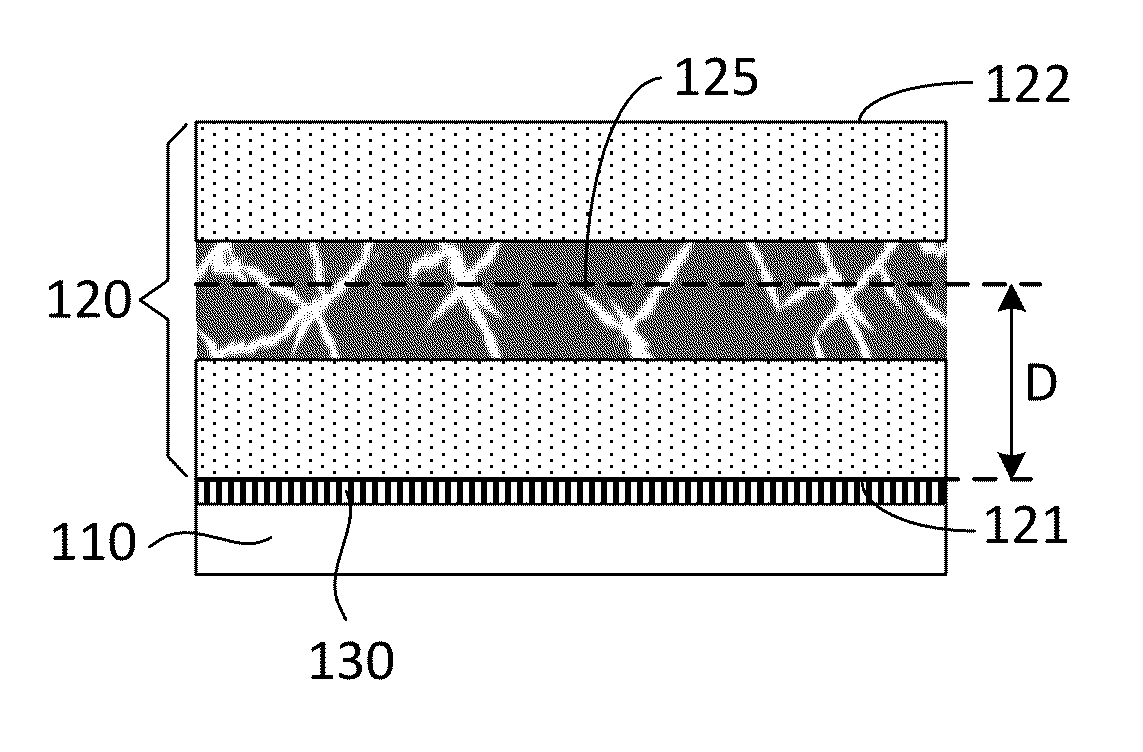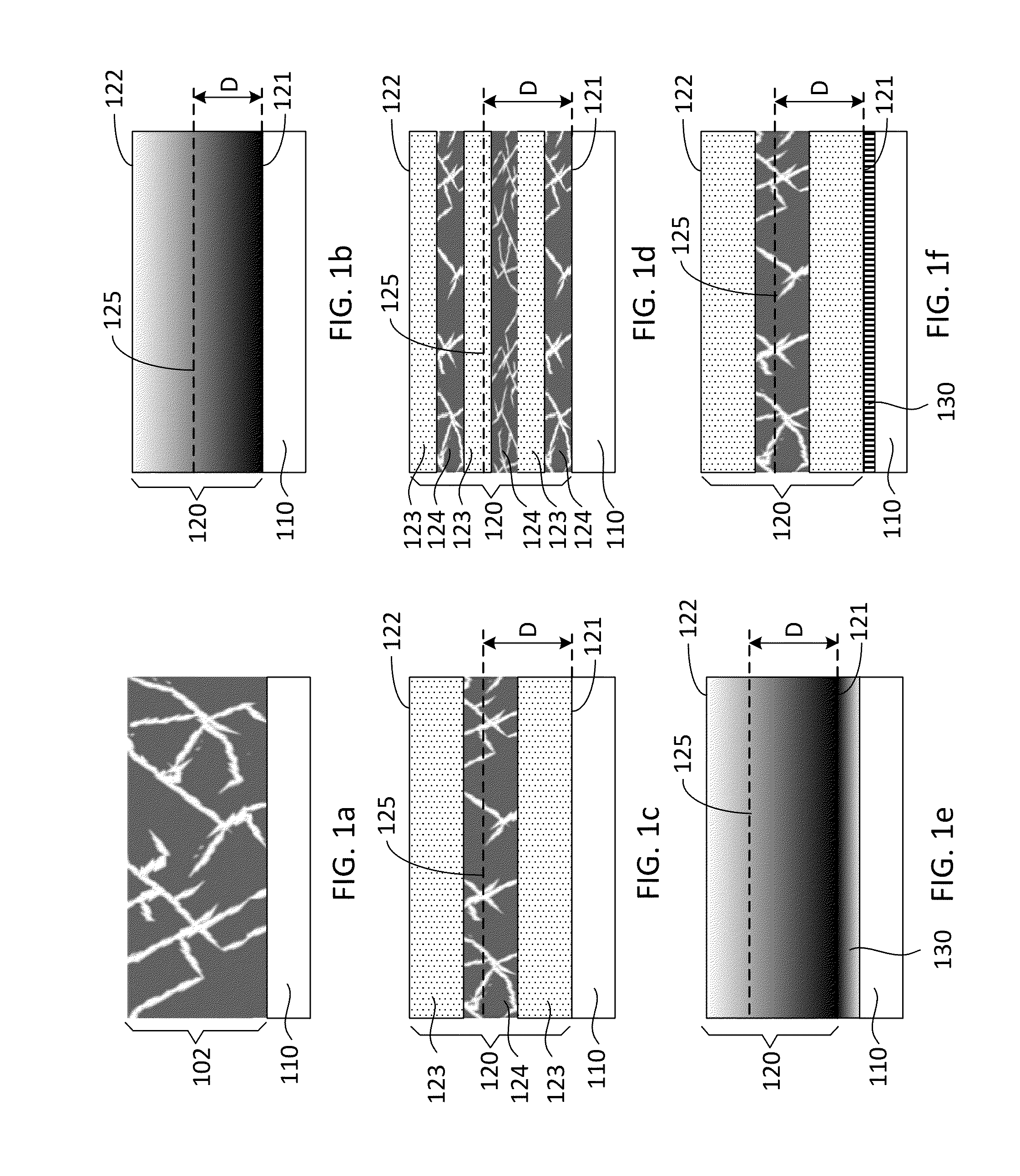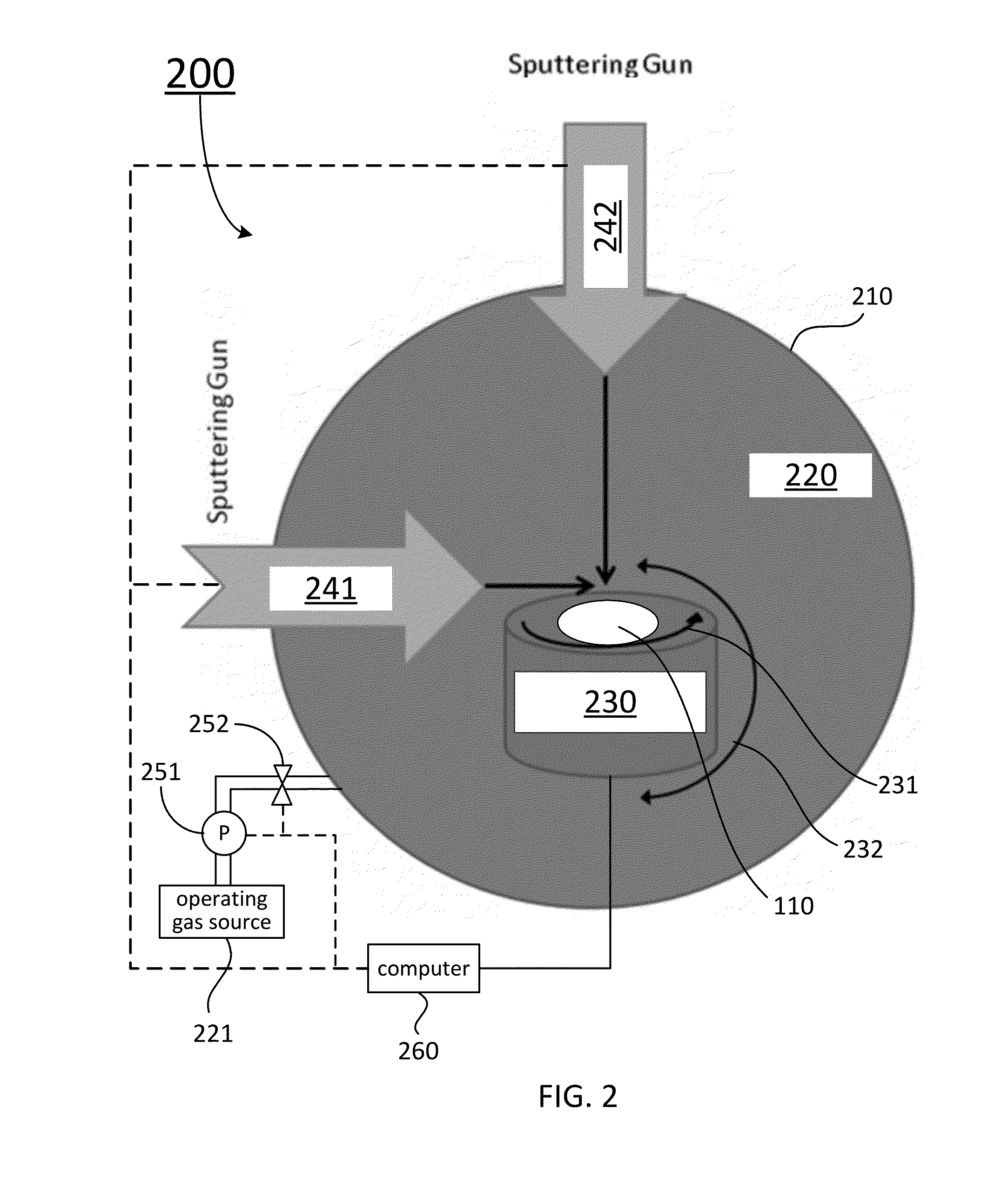Density modulated thin film electrodes, methods of making same, and applications of same
a density modulated, thin film electrode technology, applied in the field of batteries, can solve the problems of limiting the total capacity of a li-ion battery, limited high-capacity cathode alternatives, etc., to achieve enhanced film stability, high volume change, and enhanced specific capacity and cycling stability
- Summary
- Abstract
- Description
- Claims
- Application Information
AI Technical Summary
Benefits of technology
Problems solved by technology
Method used
Image
Examples
example 1
Cycling Performance of Density Modulated Multilayer Silicon Thin Film Anodes in Li-Ion Batteries
[0140]The high volumetric expansion / contraction of silicon (Si) anodes in Li-ion batteries by about 400% during lithiation / delithiation causes considerably high stress followed by cracking, pulverization, and the loss of electrical contact; and finally results in capacity fading and failing. In this work, we present a density modulated multilayer Si thin film anode approach, which can provide a robust high capacity electrode for Li-ion batteries. Alternating high and low density layers have been achieved by simply changing the working gas pressure between low and high values, respectively during magnetron sputter deposition of Si thin film anodes. Our results reveal that density modulated Si films can provide a high coulombic efficiency up to 99% and reversible specific capacity as high as about 1700 mAh g−1 after 50 cycles. Low-density layers serve as compliant layers during volume chang...
example 2
Low-Density Silicon Thin Films for Li-Ion Battery Anodes
[0164]Density of sputter deposited silicon thin films was changed by a simple working gas pressure control process, and its effects on the cycling performance of Si films in Li-ion batteries as anodes was investigated. Higher gas pressure results in reduced film densities due to a shadowing effect originating from lower mean free path of sputter atoms, which leads to a wider angular distribution of the incoming flux and formation of a porous film microstructure. Si thin film anodes of different densities ranging from 2.27 g / cm3 (film porosity about 3%) down to 1.64 g / cm3 (about 30% porosity) were fabricated by magnetron sputtering at argon pressures varying from 2×10−3 mbar to 26×10−3 mbar, respectively. High density Si thin film anodes of 2.27 g / cm3 suffered from an unstable cycling behavior during charging / discharging depicted by a continuous reduction in specific down to about 830 mAh / g at the 100th cycle. Electrochemical pr...
example 3
[0173]Residual Stress Modelin gof Density Modulated Silicon Thin Films using Finite Element Analysis
[0174]Ass disclosed in EXAMPLES 1 and 2 above, density modulated thin films offer a compliant property that can reduce residual stress, which typically originate during the growth of thin films. Lower residual stress improves adhesion properties of the film with reduced buckling or delamination, and therefore leads to more durable coatings. In this study, finite element analysis (FEA) was employed to simulate the residual stresses developed in density modulated silicon (Si) thin films, which incorporate alternating low and high density layers. The main focus of this investigation is not developing new FEA algorithms but to verify the impact of density modulated layers quantitatively using computational methods. Hence, verification of a predicted stress reduction enhances the current understanding of the mechanics of density modulated layered thin films. FEA simulation results reveal t...
PUM
| Property | Measurement | Unit |
|---|---|---|
| electronic conductivity | aaaaa | aaaaa |
| thickness | aaaaa | aaaaa |
| pressures | aaaaa | aaaaa |
Abstract
Description
Claims
Application Information
 Login to View More
Login to View More - R&D
- Intellectual Property
- Life Sciences
- Materials
- Tech Scout
- Unparalleled Data Quality
- Higher Quality Content
- 60% Fewer Hallucinations
Browse by: Latest US Patents, China's latest patents, Technical Efficacy Thesaurus, Application Domain, Technology Topic, Popular Technical Reports.
© 2025 PatSnap. All rights reserved.Legal|Privacy policy|Modern Slavery Act Transparency Statement|Sitemap|About US| Contact US: help@patsnap.com



